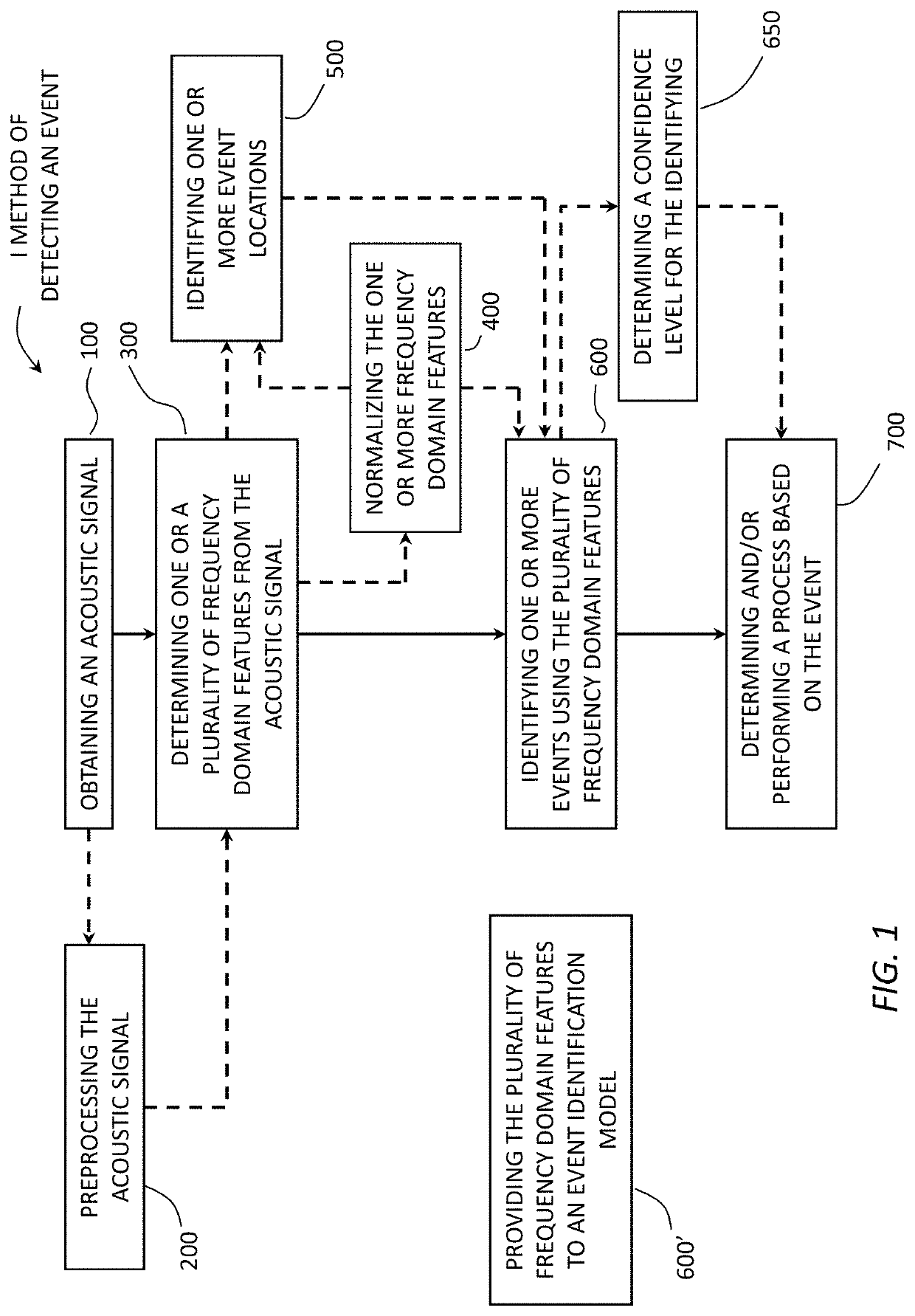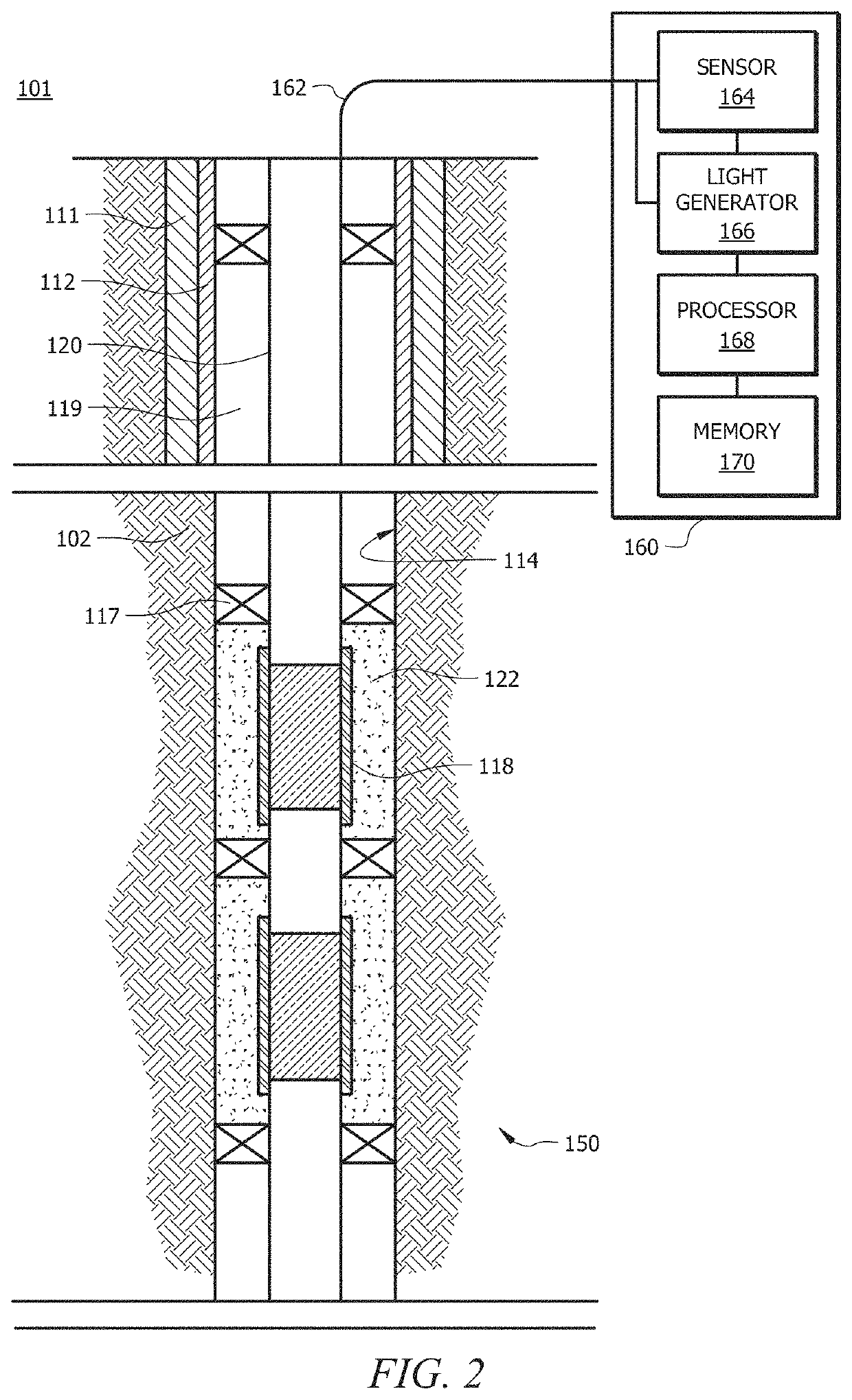Event Detection Using DAS Features with Machine Learning
a machine learning and event detection technology, applied in the field of hydrocarbon production wells, can solve the problems of reducing oil production, contaminating and damage of surface equipment, and delaying substantial amounts of well production,
- Summary
- Abstract
- Description
- Claims
- Application Information
AI Technical Summary
Benefits of technology
Problems solved by technology
Method used
Image
Examples
first embodiment
[0183]In a first embodiment, a method of identifying events comprises: obtaining an acoustic signal from a sensor; determining one or more frequency domain features from the acoustic signal, wherein the one or more frequency domain features are obtained across a frequency range of the acoustic signal; providing the one or more frequency domain features as inputs to a plurality of event detection models; and determining the presence of one or more events using the plurality of event detection models, wherein at least two of the plurality of event detection models are different.
[0184]A second embodiment can include the method of the first embodiment, wherein the sensor is disposed within a wellbore, wherein the acoustic signal comprises acoustic samples across a portion of a depth of the wellbore.
[0185]A third embodiment can include the method of the first or second embodiment, further comprising identifying one or more event locations using the one or more frequency domain features.
[...
sixth embodiment
[0208]In a twenty sixth embodiment, a method of determining an output signal using an acoustic signal comprises: determining one or more frequency domain features from an acoustic signal, wherein the one or more frequency domain features are obtained across a plurality of lengths along a path of the sensor; providing the one or more frequency domain features as inputs to a plurality of event detection models; determining an indication of a presence of one or more events using the plurality of event detection models; providing the indication of the presence of the one or more events to a supervisory application; and determining, using the indication of the presence of the one or more events as inputs into the supervisory application, an output signal for a process or system.
[0209]A twenty seventh embodiment can include the method of the twenty sixth embodiment, further comprising: identifying one or more event locations using the one or more frequency domain features; and providing t...
ninth embodiment
[0222]A fortieth embodiment can include the method of the thirty ninth embodiment, wherein training the plurality of event identification models comprises: providing the one or more frequency domain features to a second logistic regression model of the logistic regression models corresponding to one or more event tests of the plurality of event tests where a second event is present; providing the one or more frequency domain features to the second logistic regression model corresponding to one or more event tests of the plurality of event tests where the second event is not present; and determining a second multivariate model using the one or more frequency domain features as inputs, wherein the second multivariate model defines a relationship between a presence and an absence of the second event.
[0223]A forty first embodiment can include the method of the fortieth embodiment, wherein the first multivariate model and the second multivariate model are different.
[0224]A forty second e...
PUM
 Login to View More
Login to View More Abstract
Description
Claims
Application Information
 Login to View More
Login to View More - R&D
- Intellectual Property
- Life Sciences
- Materials
- Tech Scout
- Unparalleled Data Quality
- Higher Quality Content
- 60% Fewer Hallucinations
Browse by: Latest US Patents, China's latest patents, Technical Efficacy Thesaurus, Application Domain, Technology Topic, Popular Technical Reports.
© 2025 PatSnap. All rights reserved.Legal|Privacy policy|Modern Slavery Act Transparency Statement|Sitemap|About US| Contact US: help@patsnap.com



